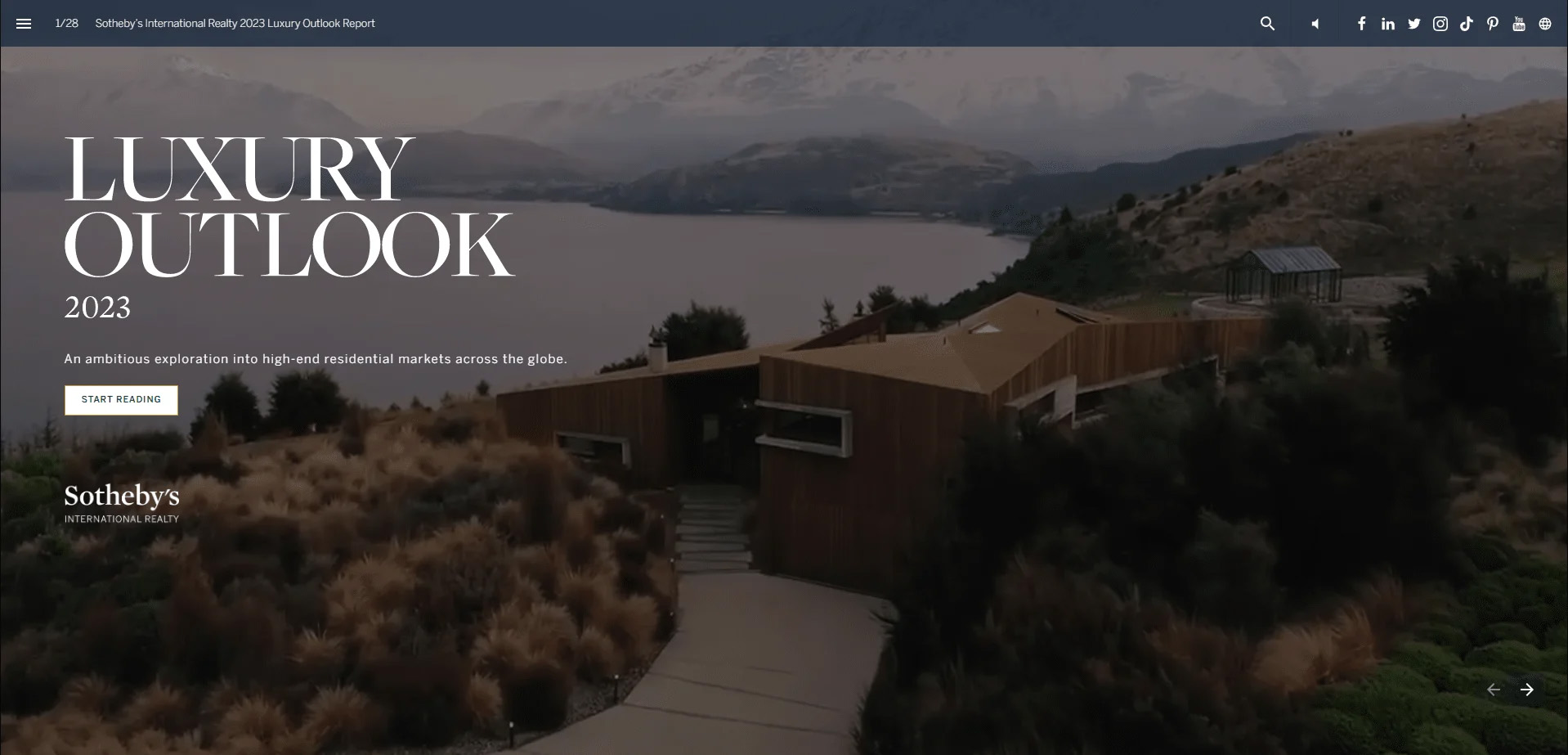Philip A. White Jr., president and CEO, Sotheby’s International Realty, has his finger on the pulse of real estate, overseeing a company that operates across continents, with more than 26,000 affiliated independent sales associates located in more than 1,000 offices in 81 countries and territories.
What do you think are the biggest issues to watch across the real estate market in 2023?
I’m hearing from our agents that their biggest concern is inventory, especially in the hot markets. In some cases, there’s only a one-month supply, whereas six months is considered equilibrium.
We’re also not seeing a whole lot of new inventory in the upper end of the market, which is overshadowing concerns of inflation and higher interest rates.
However, there is a correlation between the high-end real estate sector and the stock market. High interest rates often affect corporate earnings and as a result, the stock market. In Silicon Valley, for example, a lot of tech start-ups aren’t performing well, so people are not buying as much at the top.
Could the luxury market be insulated from some of the slowdown in the overall market?
In my view, the luxury market has always led us out of difficult cycles and down markets. The higher end market is a little insulated. Buyers are still engaged and asking brokers to tell them when something interesting comes on the market so they can act quickly, if needed. However, they are likely to be more discretionary.
There’s a bit of a divide between the seller and the buyer. The seller wants those multiple bids of the past two years, and the buyer is seeing the stock market’s challenges and wants a deal. Fannie Mae projects home price declines of 1.5% in 2023, according to its November 2022 report. However, pricing is not an exact science. For brokers, it’s an opportunity to educate, because buyers and sellers need their professional skills.
Which factors tend to affect both the higher end and general market?
Interest rates impact everything in one way or another—certainly confidence in the market. Inventory is another factor. There likely won’t be a significant unlocking of supply since few sellers will let go of their properties, creating a lock-in effect. Yet the structure of the overall housing market is very different today from previous years due to an overwhelming number of mortgages that have a fixed rate versus previous years where many had adjustable rates.
In terms of new construction, builders were proactive following the pandemic by building single family homes. In fact, single family renters have become another pillar of housing. However, building houses is hard, too, because of supply-chain issues and affordability of materials. This also might impact the second-home market. It’s not Armageddon by any means. It’s just a shock to the system because 2021 was such a historic year.
You recently partnered with Concierge Auctions, giving sellers another option.
Yes, we, along with Sotheby’s auction house, partnered with Concierge Auctions, which is a leading player in the luxury auction market. We’ve always wanted to be as diversified as possible, and Sotheby’s Concierge Auctions is a part of that, too. They had a really fascinating auction in September 2022 where we auctioned six properties in a live auction and sold US$40 million worth of property in one hour. In most cases, they can sell a house in four to six weeks, and for some sellers, having a finite timeframe for selling is very valuable.
Which areas of the world are you seeing growth in?
Florida remains strong, obviously fueled by the fact that there’s no state income tax, the weather is desirable, and there’s still relative affordability. Our affiliate companies in Colorado are still gaining a lot of momentum.
In Europe, there’s been a lot of interest in Italy, Portugal, and France mainly because of the strength of the dollar against the euro, and lifestyle, too. Greece is also very attractive to buyers. Dubai had a stellar year with some very large sales. We’re seeing growing interest in Montenegro, as well as Bulgaria and Serbia, and we recently opened offices there.
In the Caribbean and Latin American region, the Bahamas also remains very strong. We’re also seeing our market share grow in Mexico. Costa Rica is seeing remarkable growth. It’s very attractive, particularly for people out West. The Dominican Republic, too.
For China and the Asia-Pacific region, strict Covid restrictions have impacted the market, but Japan has recently opened for tourism. There are opportunities for buyers there in terms of the strength of the yen.
This interview has been edited for clarity and space.


